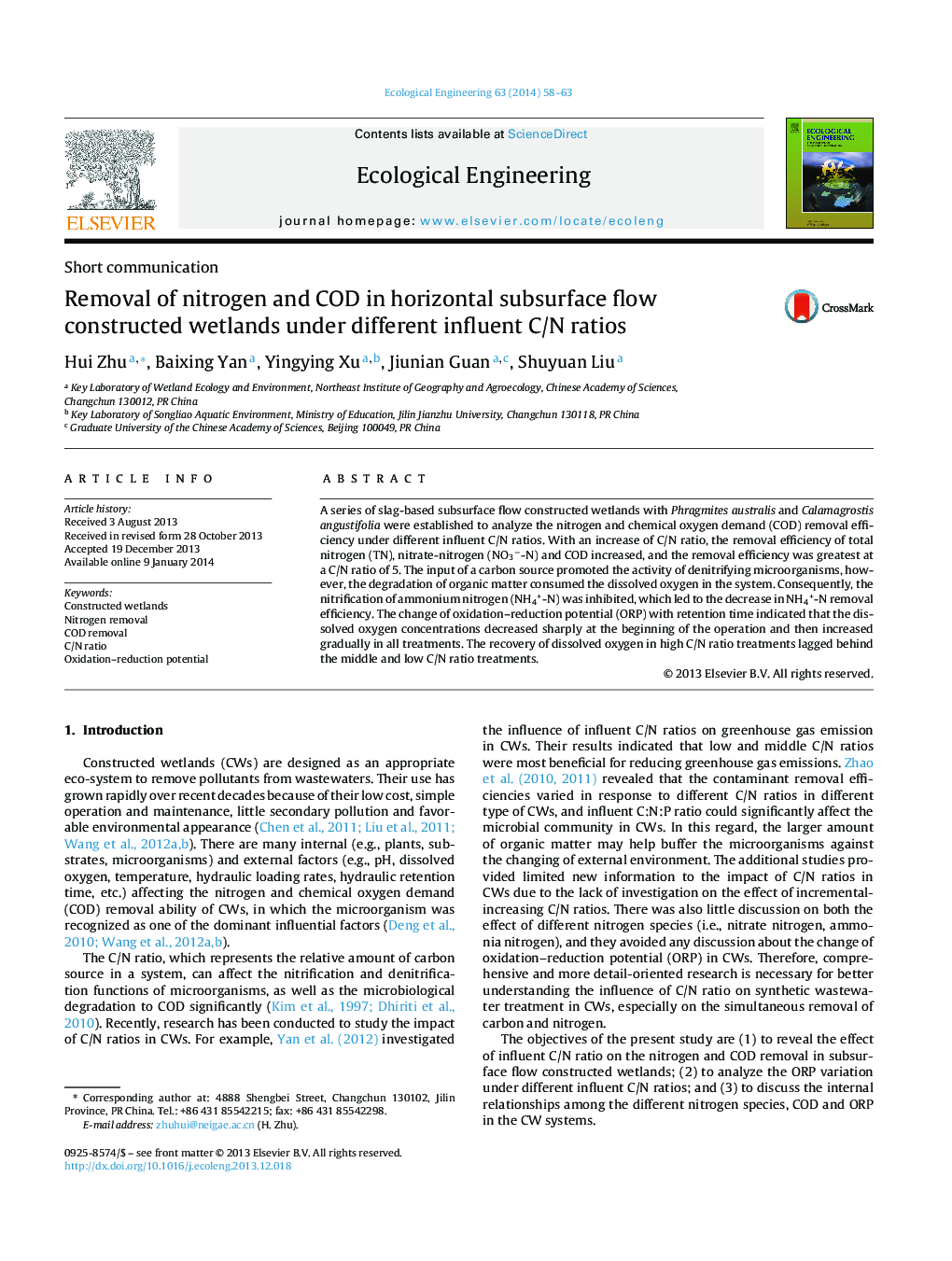| Article ID | Journal | Published Year | Pages | File Type |
|---|---|---|---|---|
| 4389618 | Ecological Engineering | 2014 | 6 Pages |
A series of slag-based subsurface flow constructed wetlands with Phragmites australis and Calamagrostis angustifolia were established to analyze the nitrogen and chemical oxygen demand (COD) removal efficiency under different influent C/N ratios. With an increase of C/N ratio, the removal efficiency of total nitrogen (TN), nitrate-nitrogen (NO3−-N) and COD increased, and the removal efficiency was greatest at a C/N ratio of 5. The input of a carbon source promoted the activity of denitrifying microorganisms, however, the degradation of organic matter consumed the dissolved oxygen in the system. Consequently, the nitrification of ammonium nitrogen (NH4+-N) was inhibited, which led to the decrease in NH4+-N removal efficiency. The change of oxidation–reduction potential (ORP) with retention time indicated that the dissolved oxygen concentrations decreased sharply at the beginning of the operation and then increased gradually in all treatments. The recovery of dissolved oxygen in high C/N ratio treatments lagged behind the middle and low C/N ratio treatments.
